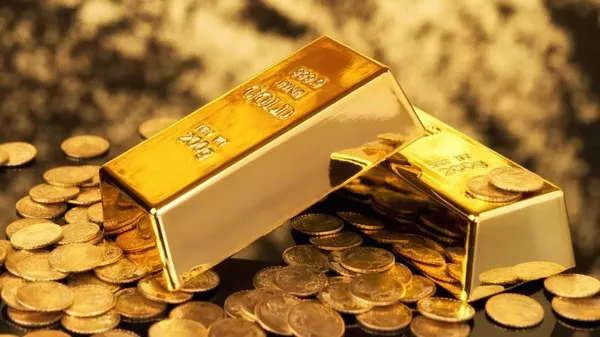Gold, often referred to as the “king of metals,” has held its allure as a store of value and a hedge against economic uncertainty for centuries. Investors and traders worldwide seek exposure to this precious metal through various financial instruments, with gold futures contracts being a popular choice. In this article, we will explore the intricacies of gold futures contracts, examining how they are priced and their value in today’s financial markets.
What Is a Gold Futures Contract?
A gold futures contract is a standardized financial agreement that obligates the buyer to purchase and the seller to deliver a specified quantity of gold on a predetermined future date at a pre-agreed price. These contracts are traded on commodities exchanges and serve various purposes, including speculation, hedging, and portfolio diversification.
Pricing a Gold Futures Contract
The price of a gold futures contract is influenced by several key factors, and understanding these components is essential for investors and traders looking to participate in this market.
1.Current Gold Price: The most fundamental factor in determining the price of a gold futures contract is the prevailing market price of gold. This price is influenced by global supply and demand dynamics, geopolitical events, inflation expectations, and other economic factors. The futures price will closely track the spot price of gold, with minor deviations due to carrying costs and interest rates.
2. Time to Delivery: The length of time until the contract’s delivery date, known as the contract’s expiration, has a significant impact on its price. As the delivery date approaches, the futures price should converge with the spot price, ensuring that market participants are not exposed to substantial arbitrage opportunities.
3. Interest Rates: The opportunity cost of holding gold can affect the pricing of gold futures contracts. If interest rates are high, investors may choose to invest in interest-bearing assets rather than gold, which could put downward pressure on gold futures prices.
4. Carrying Costs: Holding physical gold incurs certain costs, such as storage, insurance, and financing charges. These carrying costs can vary depending on the terms of the futures contract and the prevailing interest rates. Futures prices will incorporate these costs through a mechanism known as the cost of carry.
5. Market Sentiment: Market sentiment plays a crucial role in short-term fluctuations in gold futures prices. Traders often react to news, economic data releases, and geopolitical events, causing rapid price movements. While these fluctuations can be short-lived, they can create trading opportunities for speculators.
6. Volatility: Gold is known for its price volatility. Higher volatility generally leads to higher futures prices, as market participants demand a premium for bearing the risk associated with price swings.
Value of a Gold Futures Contract
The value of a gold futures contract can be calculated using the following formula:
Value = Contract Size × Futures Price
Contract Size: The contract size specifies the quantity of gold that the futures contract represents. For example, the standard contract size for gold futures on the COMEX (Chicago Mercantile Exchange) is 100 troy ounces.
Futures Price: This is the agreed-upon price at which the buyer and seller commit to exchange gold on the contract’s delivery date.
Let’s illustrate the calculation with an example: If the futures price of a gold contract is $1,800 per troy ounce, and the contract size is 100 troy ounces, the value of the contract would be:
Value = 100 troy ounces × $1,800/ounce = $180,000
This means that each gold futures contract represents $180,000 worth of gold.
Uses of Gold Futures Contracts
Gold futures contracts serve various purposes for different market participants:
Speculation: Traders looking to profit from short-term price movements often use gold futures for speculation. They can take long (buy) or short (sell) positions based on their price forecasts.
Hedging: Producers and consumers of gold, such as mining companies and jewelry manufacturers, use gold futures contracts to hedge against adverse price movements. By locking in a future selling or buying price, they can protect themselves from market volatility.
Portfolio Diversification: Investors add gold futures to their portfolios to diversify risk. Gold’s low correlation with other assets can help reduce overall portfolio volatility.
Arbitrage: Traders may engage in arbitrage strategies to profit from price differences between the futures and spot markets. These strategies involve simultaneously buying and selling equivalent positions in both markets to capture risk-free profits.
Conclusion
Gold futures contracts play a crucial role in the global financial markets, allowing participants to gain exposure to the price movements of this precious metal without having to physically own or store it. The pricing of gold futures contracts is influenced by various factors, including the current gold price, time to delivery, interest rates, carrying costs, market sentiment, and volatility. Understanding these factors is essential for investors and traders seeking to navigate the gold futures market effectively.
Whether used for speculation, hedging, diversification, or arbitrage, gold futures contracts provide a versatile tool for managing risk and capitalizing on opportunities in the ever-evolving world of finance. As with any financial instrument, it is vital for market participants to conduct thorough research and risk assessment before engaging in gold futures trading to make informed decisions and manage their exposure effectively.


